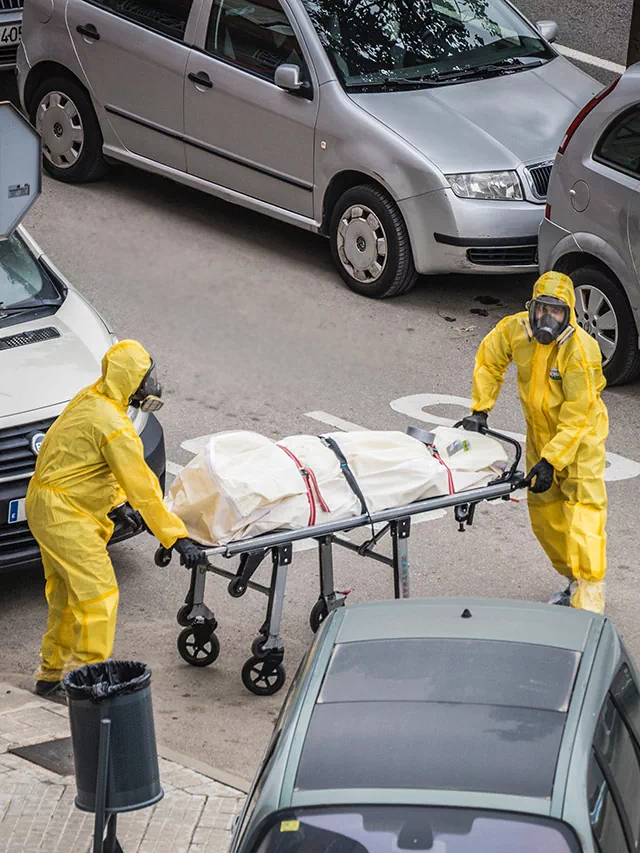The process is called lung transplantation and it is typically done for people with end-stage lung disease or lung failure. However, the lungs must be healthy, and the donor must have died in a hospital setting in order to be considered for transplantation.
In addition to the requirements that the lungs must be healthy and the donor must have died in a hospital setting, there are also certain criteria that the potential donor must meet in order to be considered for lung donation. These criteria include factors such as age, overall health, and the cause of death.
The lungs are removed in the operating room in a procedure similar to an organ donation. The lungs are then evaluated for any damage or disease, and if they are deemed suitable for transplant, they are sent to the recipient hospital. The transplant surgery is typically done within 6 hours of the lungs being removed from the donor.
It’s important to note that lung donation is less common than other organ donations due to the sensitive nature of the lungs and the fact that they must be matched to the recipient based on blood type, size, and other factors. Also, the number of people in need of a lung transplant far exceeds the number of available lungs for transplant.
Lung transplantation is considered a last resort treatment option for people with end-stage lung disease or lung failure. Lung diseases such as chronic obstructive pulmonary disease (COPD), cystic fibrosis, and idiopathic pulmonary fibrosis are common conditions that can lead to the need for a lung transplant.
When a person is considered for a lung transplant, they will undergo a thorough evaluation to determine if they are a suitable candidate for the procedure. This evaluation includes a physical examination, blood tests, imaging studies, and lung function tests. The patient will also be evaluated for any other health conditions that could make the transplant more risky or less likely to be successful.
The transplantation procedure itself involves removing the diseased lungs and replacing them with the donated lungs. The surgery is typically done under general anesthesia and can take several hours. Recovery from the surgery can take several weeks or months, and the patient will need to take immunosuppressive drugs to prevent rejection of the transplanted lungs.
It’s important to note that lung transplantation is not without risks, and complications such as infection, bleeding, and rejection of the transplanted lungs can occur. Additionally, long-term survival rates for lung transplant recipients are not as high as for other organ transplants. However, for people with end-stage lung disease or lung failure, a lung transplant can greatly improve quality of life and extend life expectancy.
Lung transplantation is a complex and high-risk procedure that requires close collaboration between a team of specialists including pulmonologists, thoracic surgeons, anesthesiologists, critical care specialists, and transplant coordinators.
The post-transplant care is critical for the success of the transplant. The patient needs to be monitored closely for any signs of rejection, infection, or other complications. This includes regular check-ups, blood tests, imaging studies, and lung function tests. The patient will also need to take immunosuppressive drugs to prevent rejection of the transplanted lungs. These drugs have side effects and can increase the risk of infection and other complications.
The patient will also need to make lifestyle changes to promote the health of the transplanted lungs. This includes not smoking, avoiding exposure to pollutants and toxins, and following a healthy diet and exercise regimen.
It’s also worth mentioning that not everyone who needs a lung transplant will be able to receive one. The criteria for lung transplantation are very strict, and the number of available lungs is limited. Additionally, many patients may not be strong enough to undergo the procedure or may not survive long enough to receive a transplant.
In summary, lung transplantation is a high-risk procedure that can greatly improve quality of life and extend life expectancy for people with end-stage lung disease or lung failure. It requires a close collaboration between a team of specialists and careful post-transplant care, as well as a rigorous evaluation process, to determine if a patient is a suitable candidate for transplantation.
In addition to the traditional single lung transplant, there is also a procedure called a double lung transplant. This procedure involves the replacement of both lungs of the patient. Double lung transplant is usually recommended for patients with severe lung disease such as idiopathic pulmonary fibrosis, cystic fibrosis, and alpha-1 antitrypsin deficiency.
There is also a procedure called a living donor lung transplantation. This procedure involves the removal of one lung from a living donor to transplant it to the recipient. This is relatively rare as the number of potential living donors who meet the criteria is limited and the procedure carries a higher risk to the living donor.
Another alternative is a lung transplantation from a deceased donor who has been declared brain dead but still on life support. This is called DCD (donation after circulatory death) and it’s becoming more common, although it carries a higher risk of complications due to the time between death and the transplantation.
It’s also worth mentioning that for some patients, lung transplantation may not be the best option. Some patients may not be strong enough to undergo the procedure or may not survive long enough to receive a transplant. Additionally, some patients may have other health conditions that make the transplant more risky or less likely to be successful. In these cases, other treatments such as oxygen therapy, lung volume reduction surgery, or lung assist devices may be more appropriate.
It’s important for patients and their families to have a detailed conversation with their healthcare team, including pulmonologists and transplant coordinators, to understand the risks and benefits of lung transplantation, as well as alternative options, so they can make an informed decision about the best course of treatment.





